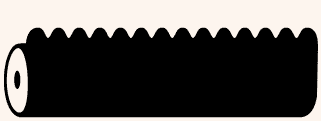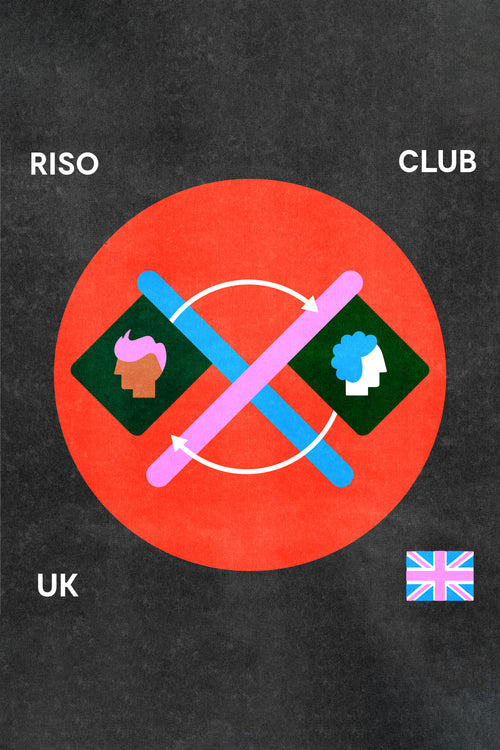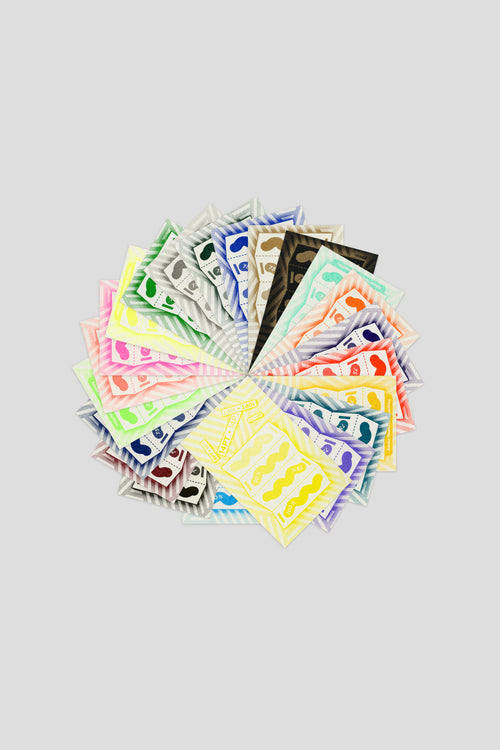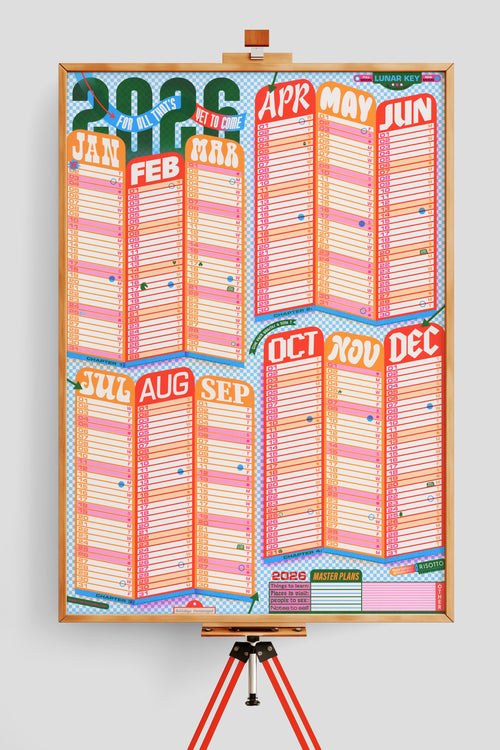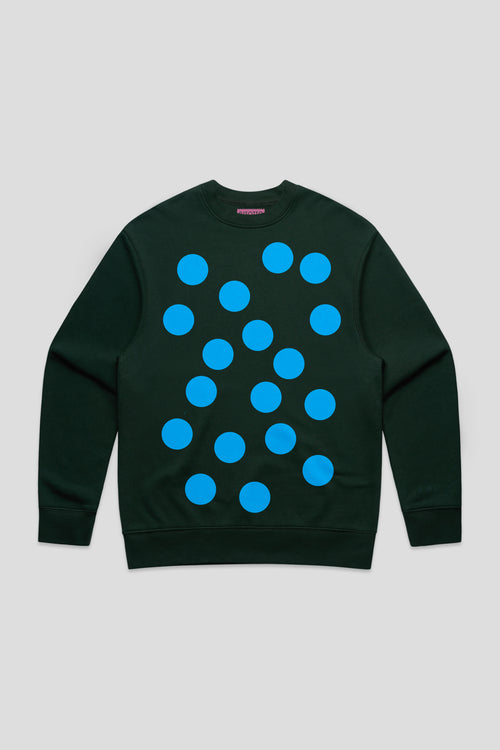BOOK + PAGINATION GUIDES
How to Paginate Books or Zines specifically for risography and A3 Paper sheets.
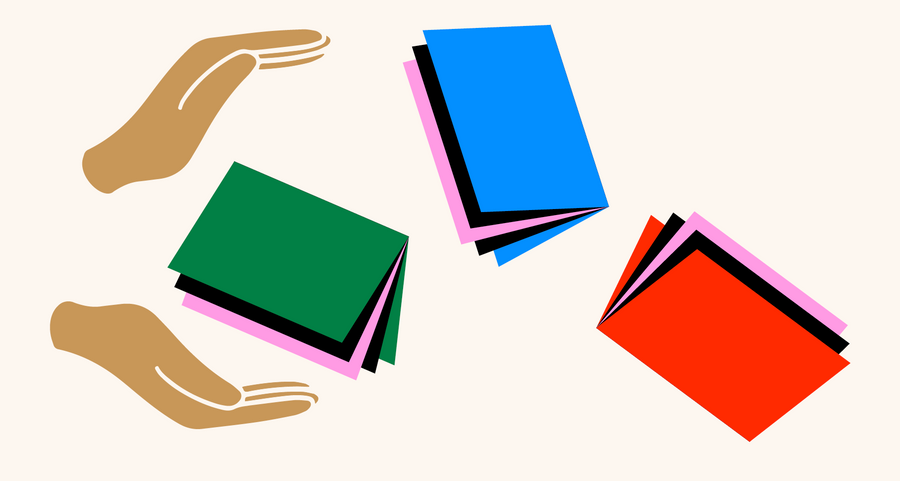
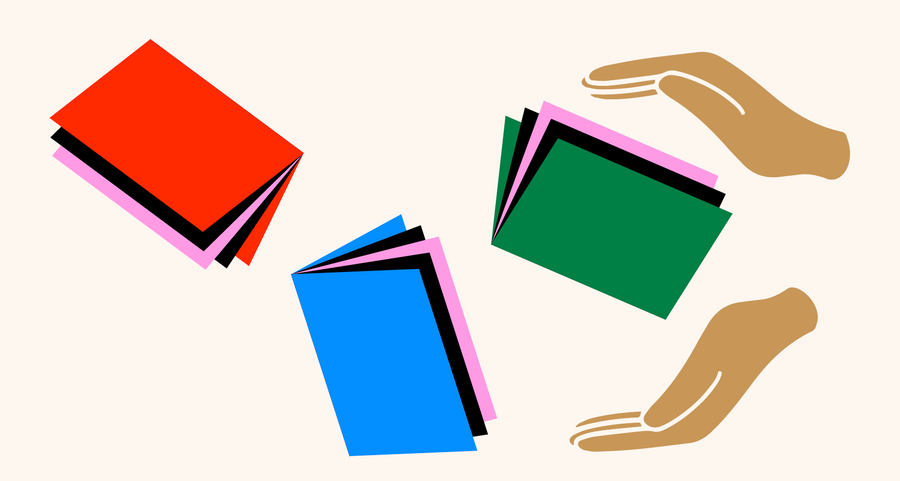
KEY-WORD GLOSSARY:
IMPOSITION
+The arrangement of pages onto A3 printed sheets (also known as parent
sheets) so they will be in proper sequence once the sheets are printed and folded/bound together.
PAGINATION
+The numbering of pages in a document.
READER SPREADS
+Document layouts of pages put in the
sequential order a person would actually read them.
PRINTER SPREADS
+Document layouts of pages put in the order necessary to print them so they will be readable in proper sequence once folded and bound.
DUMMY
+Folded paper that represents a finished project
WORK-AND-TURN
+A sheet of paper is printed on its first side and then turned over LEFT TO RIGHT and printed on the back side.
WORK-AND-TUMBLE
+A sheet of paper is printed on its first side and then turned over TOP TO BOTTOM and printed on the back side.
SHEETWISE
+A sheet of paper is printed on its first side and exits the printer; it is then
manually turned over and re-enters the printer/press to be printed on its back side.
BOOK PRINTING LAYOUT
+The most typical layout is to have 4 pages per side of a parent A3 sheet, meaning each A3 sheet will have 16 total pages when printed on both sides.
PP (Printed Pages)
+The abbreviation 'pp' (eg 8pp) stands for printed pages. This is the number of 'printed sides'.
PAGE COUNT
+During printing, your pages are printed on A3 paper that holds (depending on your finished book size) 4, 8, 16 or 32 pages – all multiples of four.
After printing, these sheets are folded, cut and/or bound into a finished book.
Each side of a sheet counts as a page. If your page count is not a
multiple of four you would be left with blank pages throughout your book.
BLEED + SAFE ZONES
+All projects with artwork that goes to the edge of the page require an extra 5mm of artwork beyond the trim line in all dimensions, known as “bleed.”
This area will be cut off in the final product, but printing it ensures that all printing goes to the edge even with the standard riso registration variances of (3mm) inherent to the printing process.
In addition, we recommend keeping all text and important graphics at least 10mm away from the edges of the page, so that no content is lost during the finishing process.
CREEP
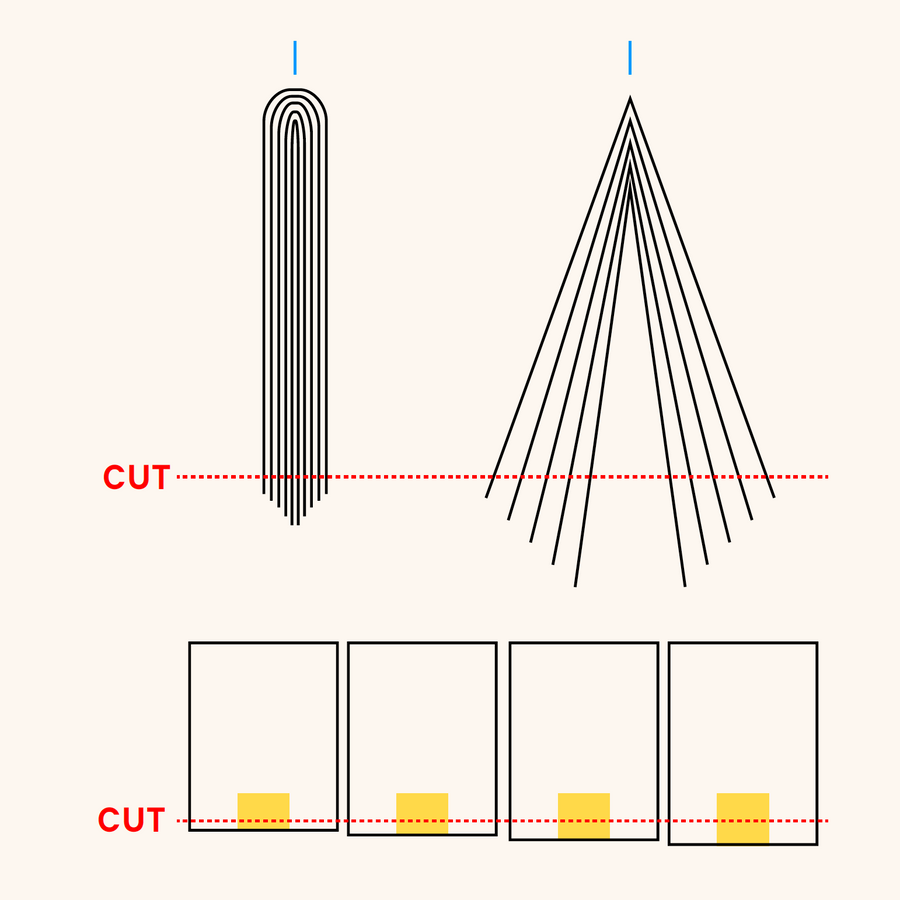
Creep is where the bulk of the paper in a saddle stitched booklet causes the inner pages to extend or ‘creep’ further out than the outer. This is an exaggerated view of how important content can get lost, where the more central pages are the most vulnerable, and extend beyond the edge the most.
CREEP ALLOWANCE
The amount of creep depends on the size of the margins, number of pages, and the thickness of the paper. A booklet with few pages and wide margins might not need creep allowance because the difference after trimming is not noticeable.
If creep is noticeable, copy should be repositioned toward the centre of the spread (especially for pages in the middle of the book). Layout software (InDesign) can automatically calculate creep allowance and adjust layouts for creep — moving the page elements of affected spreads in small increments.
Imposition: 16pp, A5 Booklet
This is how a typical 16-page zine is paginated for risograph print. You can fit four pages per side of A3. Therefore, you will require two sets of A3 double-sided prints.
For each colour layer printed, a set of these files is required for print.
Lay out your pages in the following sequence to ensure the zine is paginated once cut, collated + bound. Check out our print bible for more info on preparing artwork.
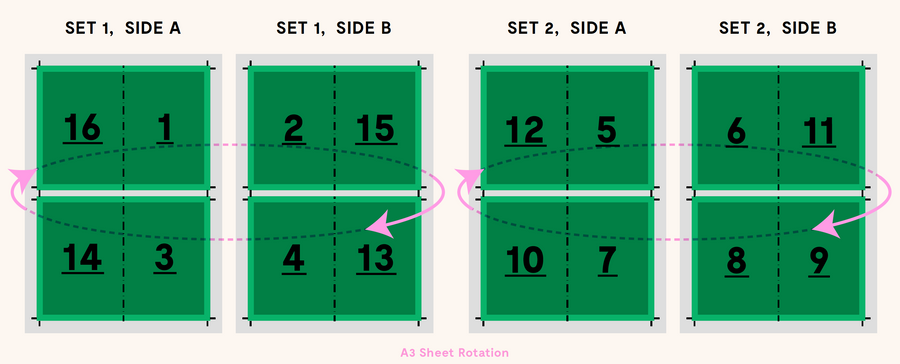
Imposition: 16pp, Folded A6 Zine
Here is a diagram of how a typical 16-page folded zine can be paginated for riso print. You can fit eight (A6) pages per side of A3. Therefore, you only require one set of double-sided A3 prints to produce this booklet.
Lay out your pages as per the sequence in the guide below, to ensure the zine is paginated correctly once folded. Once you have followed the folding guide, you will need to make two cuts (along the top edges) to ’release’ the pages, to create a collated book. We suggest stapling, sewing or using a rubber band to bind them together.
NOTE: For each colour layer required per side of A3, a unique corresponding PDF will be required to print this colour layer. Check out our riso tutorials for more info on separating + saving artwork.
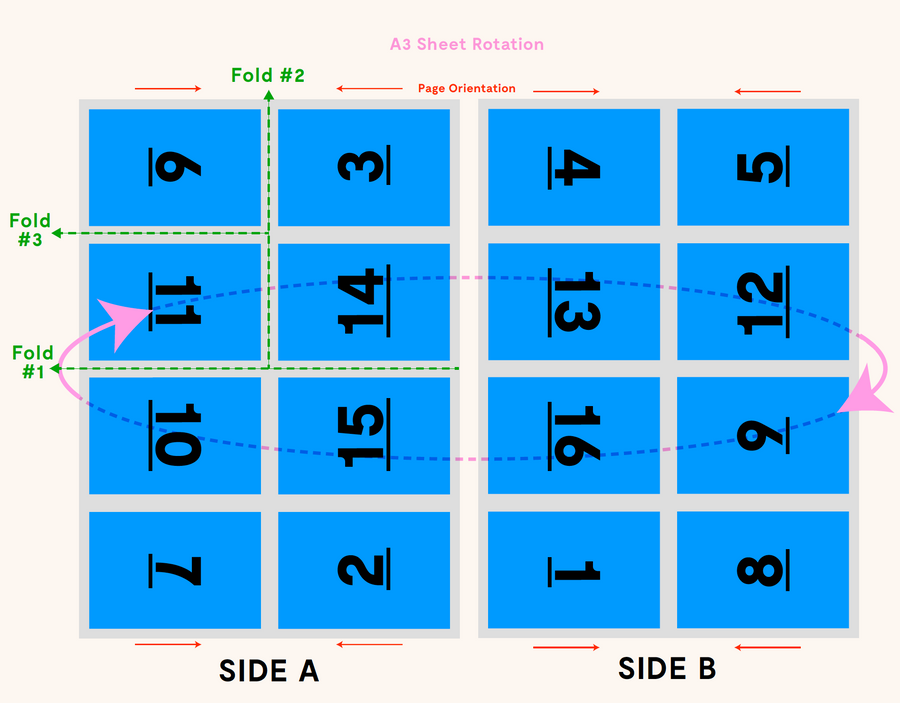
Imposition: 32pp, A6 Booklet
When laying out your zine, drop your pages in the following sequence to ensure the zine is paginated once cut, collated + bound. You can fit eight pages per side of A3. Therefore, you will require two sets of A3 double-sided prints.
For each colour layer printed, a set of these files is required for print. Make sure you follow the page orientation arrows if supplying artwork as ‘Portrait’.
Check out our print bible for more info on separating + saving artwork.
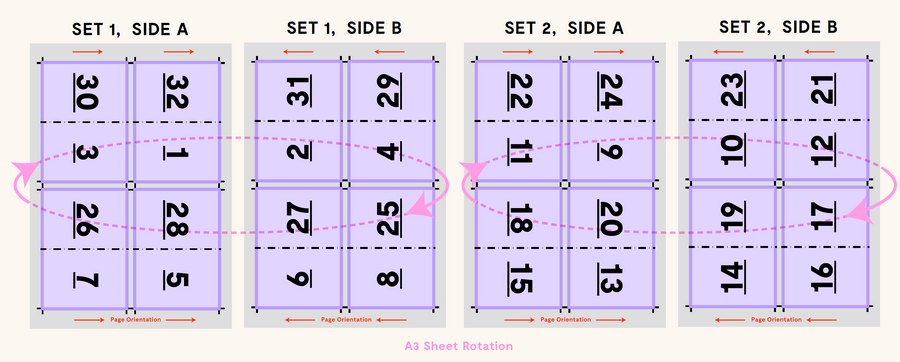
Imposition: 24pp, A5 Booklet
This is how a typical 24-page booklet is paginated for riso print. You can fit four pages per side of A3. Therefore, you will require three sets of A3 double-sided prints.
Lay out your pages in the following sequence to ensure the zine is paginated once printed, trimmed, folded and bound. For each colour layer printed, a set of these files is required for print. Check out our print bible for more info on separating
+ saving artwork

